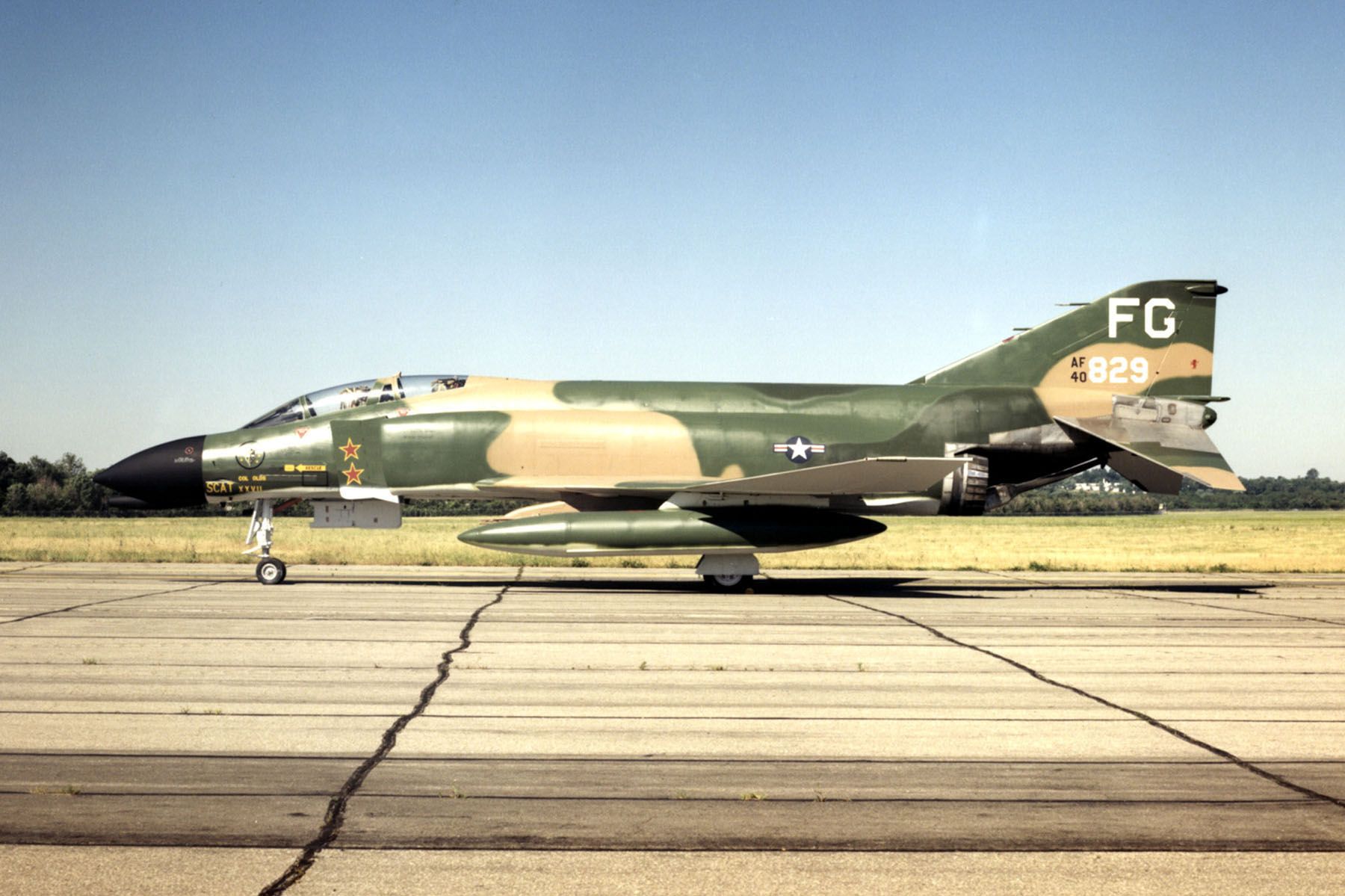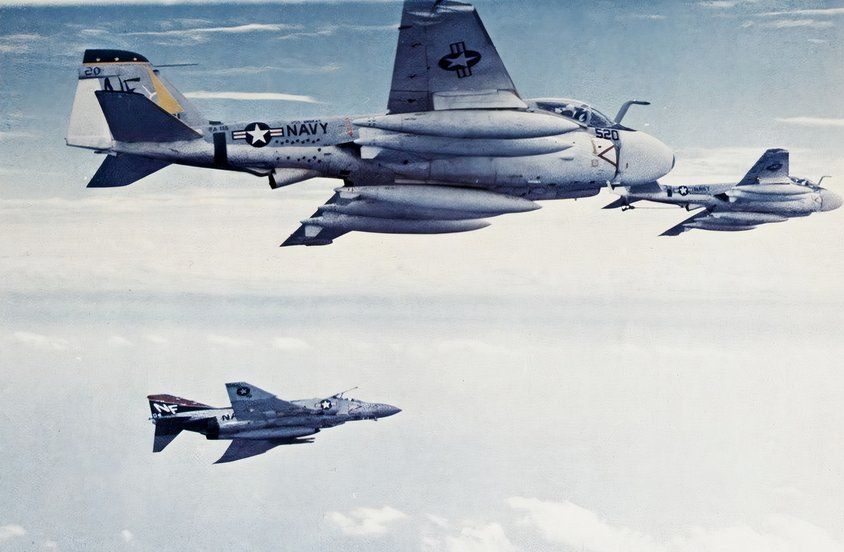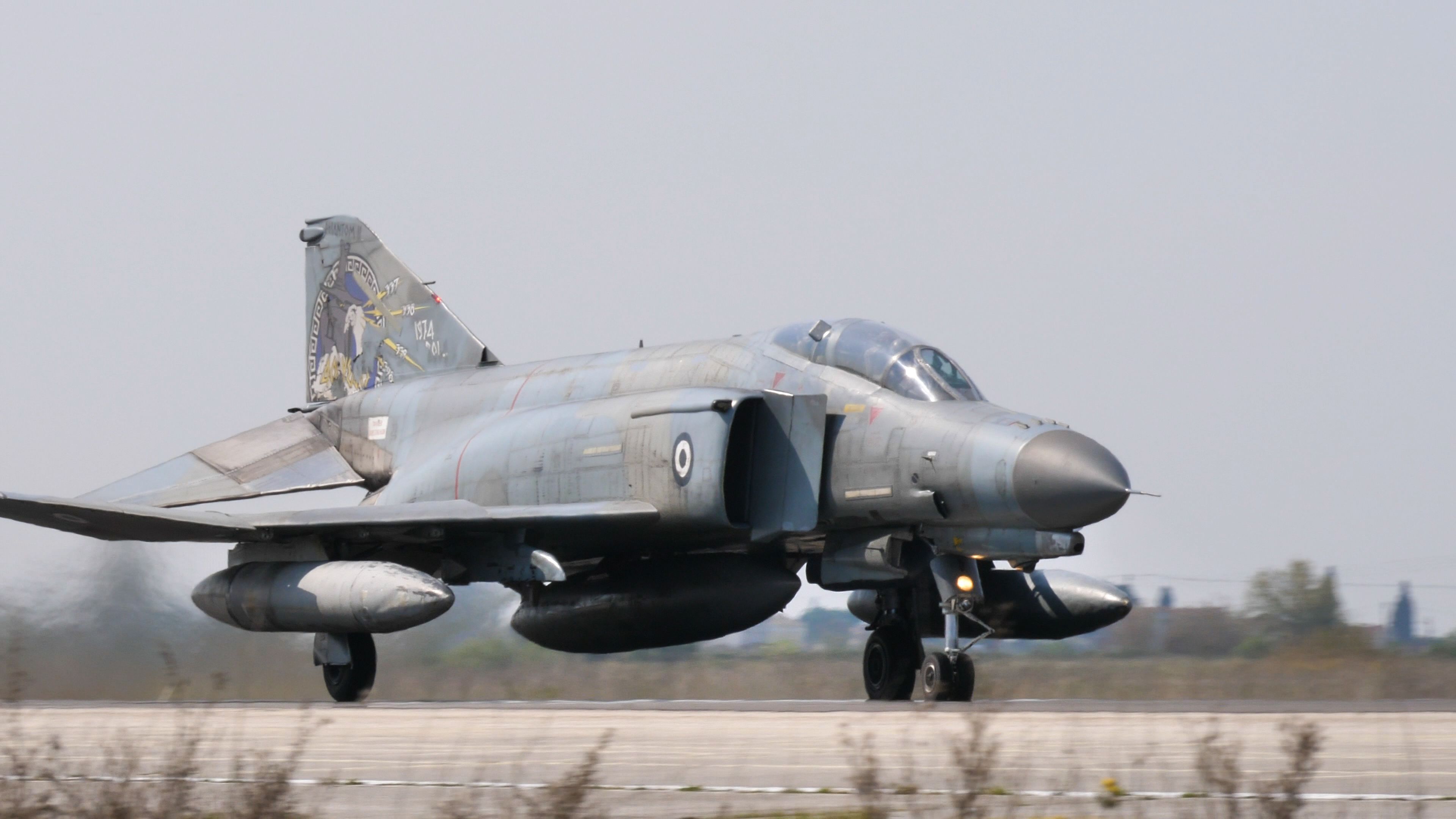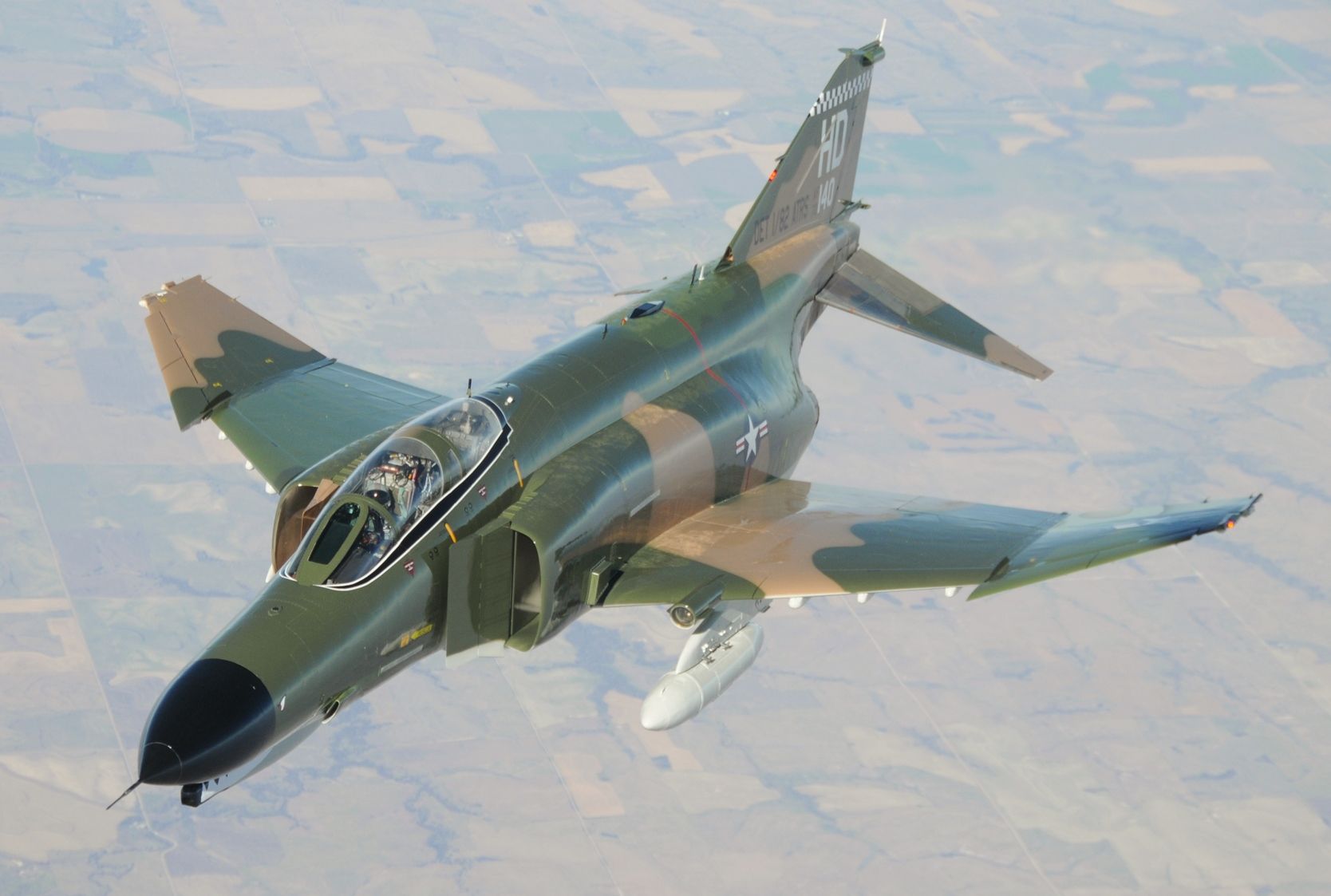Summary
- Over 5,000 F-4 Phantom II jets were produced from 1958-1981, serving various types of combat missions.
- Vietnam War CAS supported ground troops by carrying up to 18,650 lb of weapons on external hardpoints.
- F-4 fleet played key roles in strike escort, air interdiction, and air superiority missions, including suppression of enemy air defenses.
The McDonnell Douglas F-4 Phantom II is an all-weather supersonic fighter-bomber that served all areas of the US military, including the Navy, Air Force, and the Marine Corps. Serving as a major part of different US military arms, the aircraft was deployed in a variety of missions and roles.
Between 1958 and 1981, the manufacturer produced over 5,000 examples of the F-4, making it the most-produced supersonic military aircraft in history. This article notes some types of combat missions that the F-4 Phantom II served in the US military.
1
Close Air Support (CAS)
Nine external hardpoints
- General-purpose bombs
- Cluster bombs
- TV- and laser-guided bombs
- Rocket pods
- Air-to-ground missiles
- Anti-ship missiles
- Gun pods
- Nuclear weapons
During the Vietnam War, from 1972 onwards, the Air Force F-4 Phantom IIs flew CAS missions as part of the 35th Tactical Fighter Squadron. They were based at Korat Royal Thai Air Base in Thailand and temporarily on duty from Kunsan Air Base in Korea. These jets supported ground troops in the northern part (Military Region 1) of South Vietnam.
Photo: USAF
The missions consisted of general-purpose bombs as well as cluster bombs to provide support to friendly forces on the ground. The F-4 Phantoms II defended the troops who were attacked by North Vietnamese army personnel on the ground. The aircraft is capable of carrying up to 18,650 lb (8,480 kg) of weapons on nine external hardpoints.
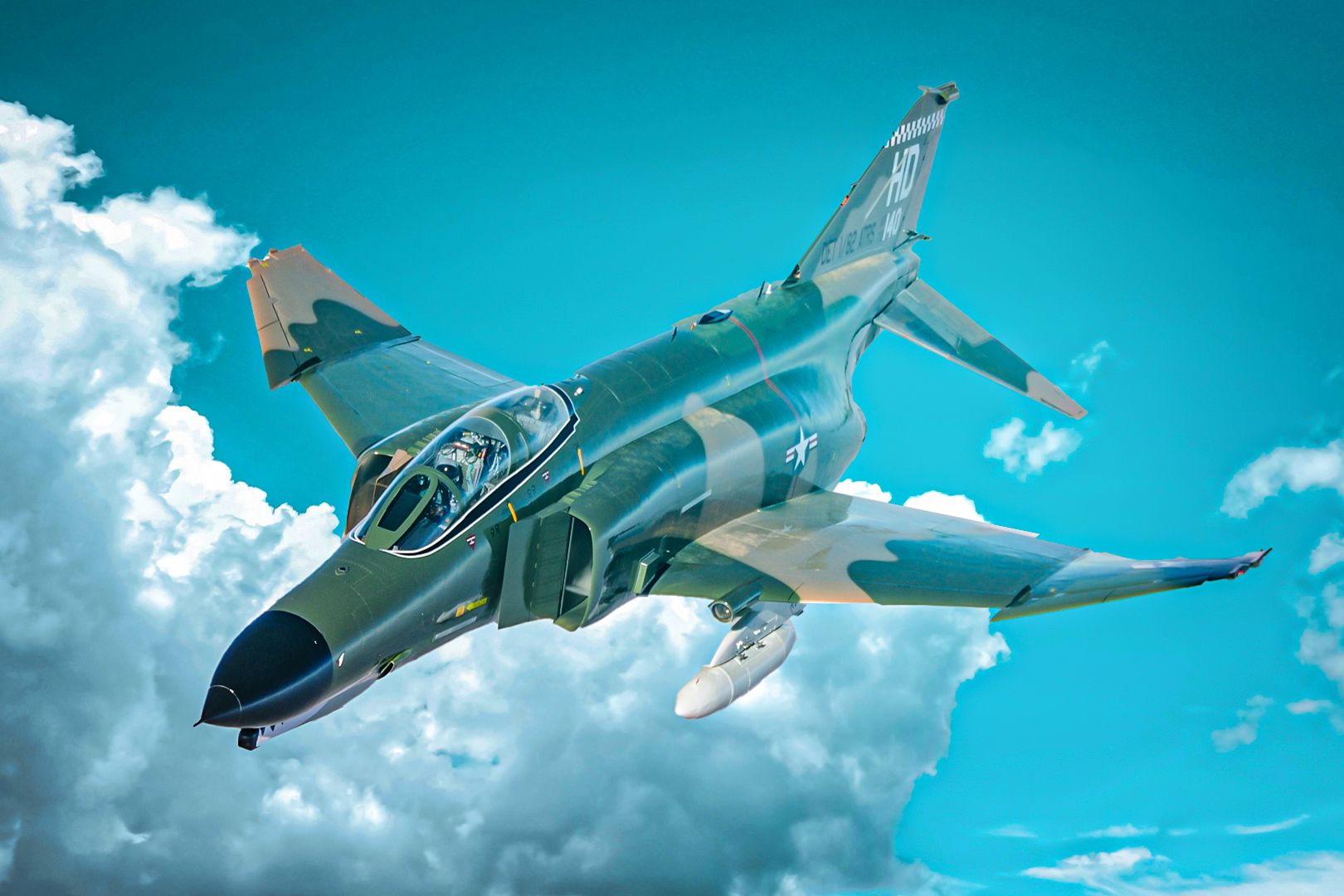
Related
5 Things To Know About The Final Days Of The US F-4 Phantom II
The F-4 Phantom’s days are entering their twilight as soon as only two countries are left operating them.
2
Strike escort
Fluid-four flying formation
- Protecting the primary aircraft fleet
- Act as a secondary line of defense
- Carry high bomb payload
- Maintain a safe distance from the enemy
The F-4 Phantom II performed strike escort missions within the heavily defended area in North Vietnam in the mid-1970s. The strike escort mission comprised four F-4s flying in formation while carrying bombs. The aircraft served as a second line of defense against the MiGs in the area.
The F-4 Phantoms engaged and destroyed the enemy targets, threatening the strike force. Pilots maintained a safe distance from the enemy aircraft, and if those came too close, the F-4s jettisoned their bombs and carried out evasive actions to avoid being shot down. The F-4s’ payload capability and agility defended the Combat Air Patrol (CAP) aircraft in the region.
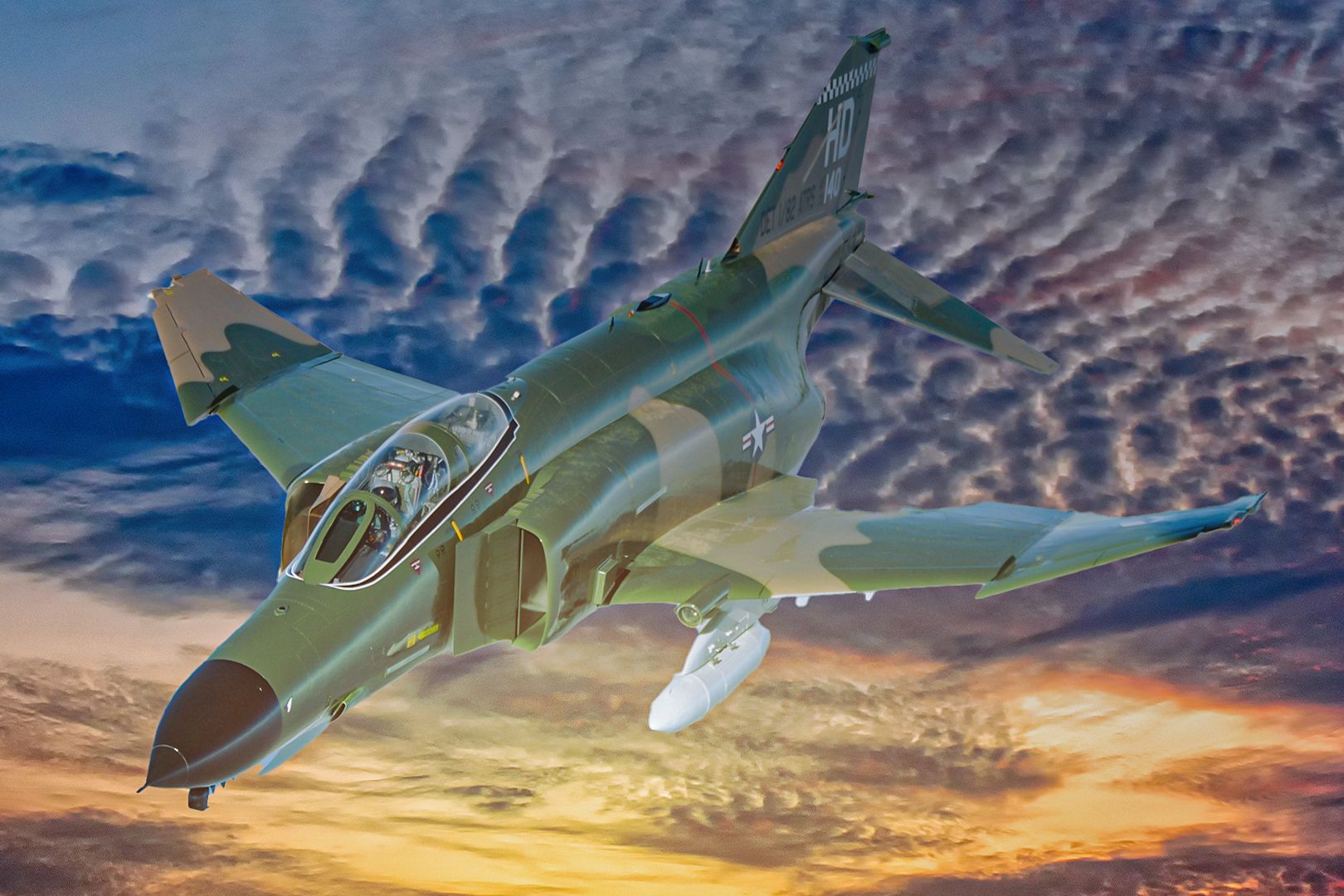
Related
Why Is The F-35 Lightning Slower Than The 64-Year-Old F-4 Phantom?
The F-35 is significantly slower than the F-4 Phantom, and yet it is infinitely more lethal and capable.
3
Air interdiction
Part of the US military objectives
- Up to 18,000 lbs capacity
- Nuclear or conventional bombs
- Rockets
- Missiles
- 20mm cannon pods in various combinations
The US military’s F-4 Phantom IIs were used in a variety of air interdiction missions. The aircraft’s precise attacking capability ensures the use of detailed intelligence to attack known and anticipated targets in the operational area. Scheduled air interdiction missions suppress enemy bases and capabilities that have the potential to hurt friendly forces.
Photo: Flight Video and Photo | Shutterstock
According to the Air Force,
“The F-4 Phantom II is a twin engine, all weather, tactical fighter-bomber. It originally performed three tactical air roles: air superiority, interdiction and close-air support. The F-4 continues to serve in retirement as the QF-4 Aerial Target, an unmanned, high performance aerial target used for live air-to-air and surface-to-air missile tests.”
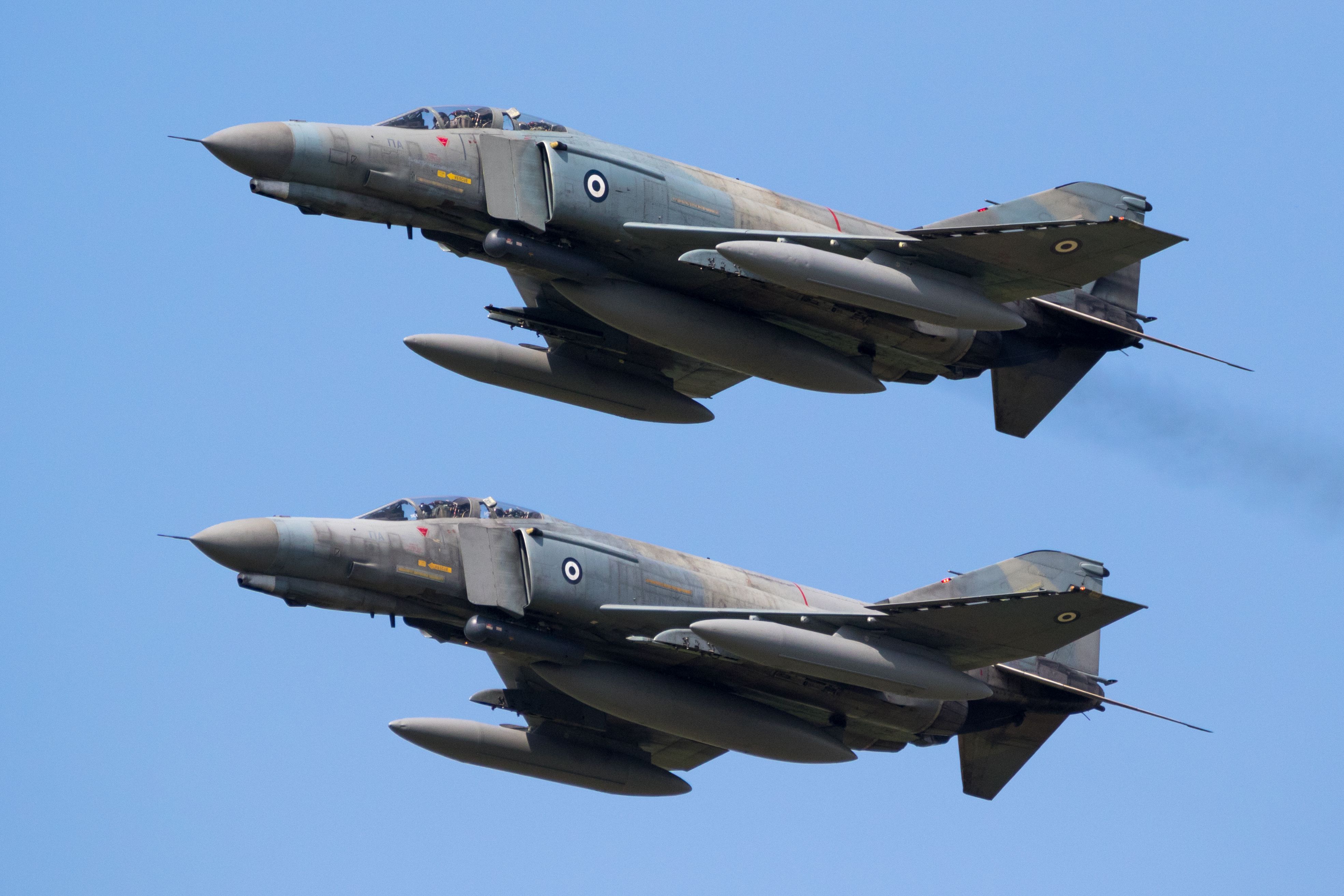
Related
Are Any McDonnell Douglas F-4 Phantoms Still Flying?
Over 5,000 aircraft were delivered, with just a handful still flying.
4
Air superiority
During Operation Desert Storm
- Various combinations of AGM-45 Shrike
- AGM-88 HARM
- AGM-65 Maverick
- AIM-7F Sparrows
- AIM-9L Sidewinder air-to-air missiles for self-protection
Operation Desert Storm in the Gulf region was the first major conflict for the US military after the end of the Cold War. The US military aircraft played a vital role in the liberation of Kuwait in the early 1990s. The F-4 Phantom II fleet operated multiple air superiority, ground support, and bombing missions in the Gulf.
According to the National Museum of the United States Air Force,
“This F-4G, from the 35th Tactical Fighter Wing, George Air Force Base, Calif., launched more than 40 missiles during Operation Desert Storm from Jan. 17 to Feb. 28, 1991.”
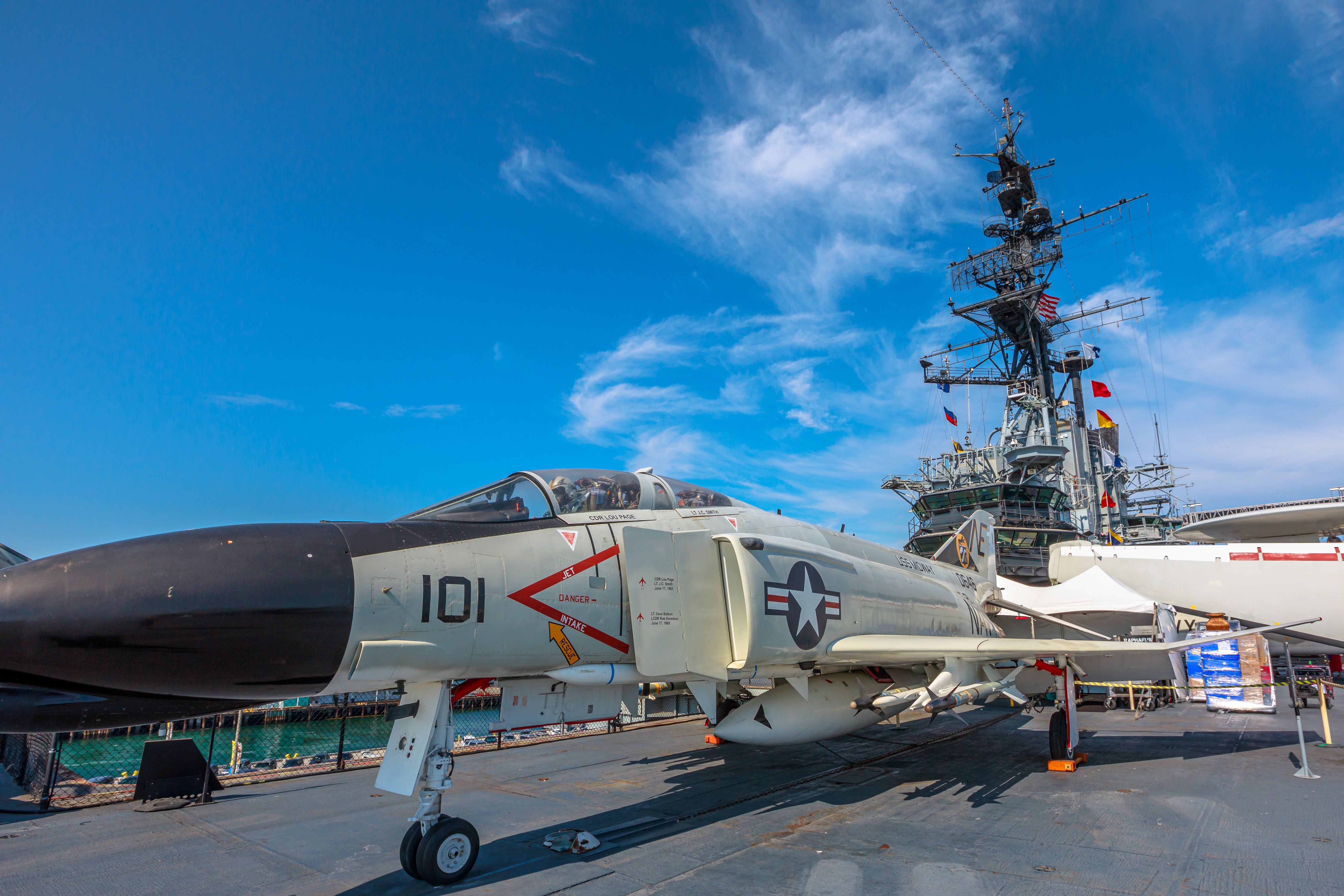
Related
Everything You Need To Know About The McDonnell Douglas F-4 Phantom II Fighter Jet
The aircraft was originally developed by McDonnell Aircraft for the United States Navy.
During long exercises in desert environments, the F-4 Phantom excelled due to its payload capacity and range. External fuel tanks and electronic countermeasures ensure mission success during the coalition attempt over Kuwait. According to the Air Force,
“The aircraft also carried two external fuel tanks on the outboard pylons and one ALQ-87 electronic countermeasures (ECM) pod on the right inboard pylon. The F-4E also had an internally mounted 20mm multibarrel gun with improved fire-control system.”
5
Suppression of enemy air defenses
The F-4G Wild Weasel
- First flew in 1975
- Retired in 1996
- The F-4G carried a pilot and an Electronic Warfare Officer (EWO), who navigated, assisted with communications and coordinated attacks
The F-4 Phantom II Wild Weasel was equipped with anti-radiation missiles to suppress enemy air defenses in flight. The US military F-4s were extensively used to destroy radar and surface-to-air missiles and air defense systems during multiple occasions.
The aircraft are tasked to bait enemy aircraft into targeting it with radars, where the incoming waves are traced back to the source. The Wild Weasel, along with other aircraft, gets the ability to precisely target enemy sources for destruction.
The F-4 Phantom II fleet was also used for aerial reconnaissance missions, primarily to obtain sensitive information about the enemy activities in the conflicted region.

Related
F-4 Phantom II: The McDonnell Corporation’s Most Numerous Aircraft Design
During its 23-year production run, the McDonnell Douglas F-4 Phantom II became the best-selling fighter jet ever made.


